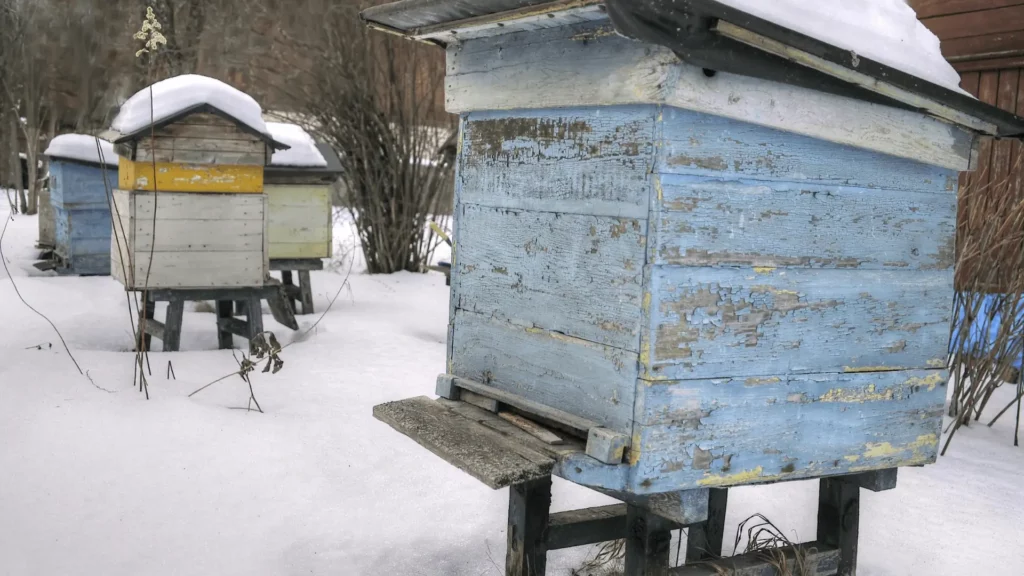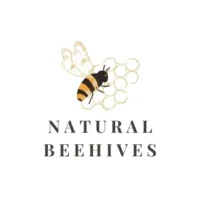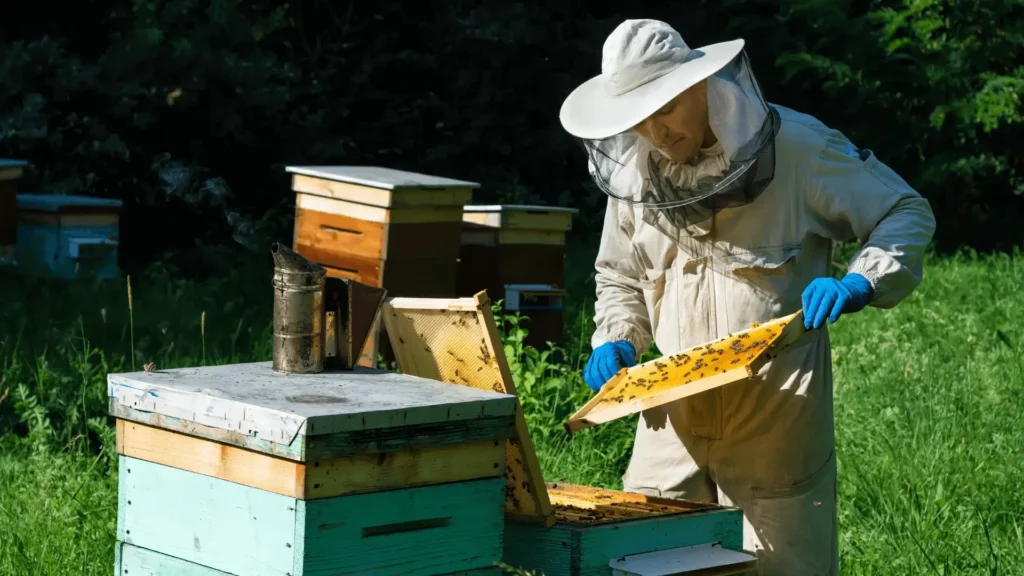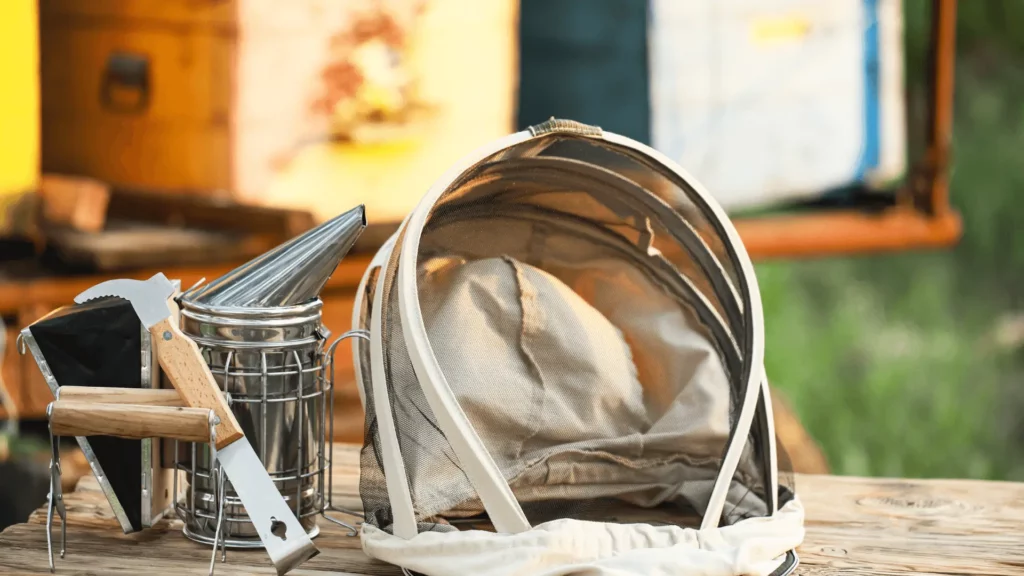
Is your beekeeping hobby at risk during the cold winter months? Worried about the survival and well-being of your colonies? Don’t fret, because we’ve got you covered! As winter approaches, it’s crucial to take the necessary steps to winterize your bee hives and ensure their long-term survival.
But where do you start? How do you protect your bees from the harsh winter conditions? This article is your ultimate guide to winterizing your hives. We’ll walk you through the best practices, step-by-step instructions, and expert tips to help your colonies thrive during the cold months.
From ensuring they have enough honey stores to providing extra insulation, we’ll cover it all. Discover the secrets to maintaining a stronger hive, maximizing colony health, and preventing detrimental effects of winter on your beekeeping venture. So, keep reading to equip you with the knowledge and confidence to prepare your bee hives for the upcoming winter season.
Introduction to Winterizing Bee Hives
Preparing your bee hives for the winter is a crucial step in ensuring the health and survival of your colonies. The cold months can be challenging for bees, as they need to maintain their body temperature and have enough food stores to sustain them during this period of decreased foraging activity. Winterizing your hives involves taking certain measures to protect and support your bees during this critical time.
Winterization plays a vital role in the long-term survival of your colonies. By providing adequate insulation, food reserves, and pest prevention strategies, you can help your bees withstand the harsh winter conditions and emerge strong in the spring. It also contributes to the overall health and productivity of your colonies.
Neglecting to winterize your hives can have detrimental effects on the bees’ well-being. Without proper preparation, weaker colonies may struggle to maintain their warmth or access sufficient food, leading to increased mortality rates. By following the recommended winterizing practices, you set your colonies up for success and increase their chances of thriving in the coming seasons.
In the next sections, we will dive deeper into the specific steps and strategies required to winterize your hives effectively. Let’s explore how you can ensure the best possible conditions for your bee colonies during the winter months.
Optimizing Winter Survival through Effective Honey Harvest and Food Management
Ensuring the availability of enough honey stores is crucial for the long-term survival of bee colonies during the winter season. As the temperature drops and food sources become scarce, bees rely on the honey they have stored in their hives to sustain themselves until spring.
Here are some important considerations when it comes to the honey harvest and winter food supply for your bees:
The Importance of Sufficient Honey Stores
During the winter months, bees go into a state of dormancy and form a cluster to conserve heat. This cluster of bees consumes honey to generate warmth and maintain their body temperature. Having enough honey stores ensures that the bees have an adequate food supply to survive the coldest months when they cannot forage for nectar and pollen.
Assessing Honey Stores
To determine if your bees have enough honey, you can conduct a visual inspection or weigh the hive using a scale. It is recommended to have at least 40-60 pounds of honey stored for each hive, depending on the local climate and the strength of the colony. Monitoring honey levels throughout the year can help you identify any potential issues and take necessary actions to supplement their food supply if needed.
Harvesting Honey Responsibly
When harvesting honey, it’s important to leave enough honey frames for the bees to survive the winter. Ensure that you only take excess honey, leaving sufficient stores for the bees’ needs. This allows them to maintain their vitality and health throughout the cold months.
Supplementing with Feeding
If you find that your honey stores are insufficient, supplemental feeding can help bridge the gap. Fall and winter feeding can be done by providing sugar syrup or fondant, which serve as an alternative food source for the bees. Consult with experienced beekeepers or local beekeeping associations for the appropriate feeding techniques and ratios to support the colony’s nutritional needs.
By prioritizing the honey harvest and ensuring adequate food stores for your bees, you are taking a significant step towards securing the long-term survival of your colonies during winter.
Winter Feeding Strategies for Bees
Feeding your bees during the fall and winter months is crucial to ensure they have enough food to survive the cold season. As the natural food sources become scarce, it is important to supplement their diet with additional nourishment. Here are some feeding practices you should follow to support your colonies:
Monitor Food Stores Regularly
Check the honey stores in your hives at the end of the last winter or early spring to determine if they have enough reserves. Assess the ratio of brood frames to honey frames to gauge the colony’s food supply. If there is insufficient honey, it is essential to provide them with an alternative food source.
Sugar Syrup Feeding
Feeding sugar syrup is a common practice to supplement the bees’ food supply. Use a mixture of granulated sugar and water in a ratio of 1:1 (by weight) for fall feeding. Offer the syrup in a top feeder or entrance feeder, ensuring easy access for the bees. Place the feeder near the brood nest, and provide enough syrup based on the size of the colony.
Fondant or Candy Boards
During winter, it may be challenging for bees to access liquid feed. In such cases, fondant or candy boards are a great alternative. These solid food sources provide the bees with the necessary nutrition. You can either purchase pre-made fondant or make your own using sugar, water, and an acidifying agent. Place the fondant or candy board directly above the brood nest for easy access.
Pollen Patties
Pollen is also a vital component of the bees’ diet, especially during winter. Providing pollen patties can help meet their nutritional needs. These patties are made by combining bee pollen with sugar syrup or a pollen substitute. Place the patties directly above the brood nest, allowing the bees to access the pollen easily.
Remember, each colony’s food requirements may vary, so it’s important to monitor their food stores regularly. By implementing these fall and winter feeding practices, you will help ensure the colonies have sufficient food for their survival and well-being throughout the cold months.
The Crucial Role of Pollen in Winter
During the winter months, pollen plays a crucial role in maintaining the well-being of bee colonies. While nectar serves as the bees’ primary source of carbohydrates, pollen provides them with essential proteins, fats, vitamins, and minerals that are vital for their overall health and development.
Pollen acts as a key nutritional component for baby bees, commonly known as brood. It serves as the primary food source for brood in their early stages of development, providing them with the necessary nutrients to grow into strong and healthy adult bees.
In addition to supporting brood development, pollen also contributes to the overall strength and vitality of the colony. Bees utilize pollen to produce royal jelly, a nutrient-rich substance that is fed to queen bees and helps maintain the colony’s reproduction and genetic diversity.
Furthermore, pollen consumption has been linked to increased immune system function in bees, enhancing their ability to fend off diseases and parasites, especially during periods of low activity and reduced access to other food sources.
To ensure that your bee colonies have access to pollen during the winter, consider planting winter-flowering plants and providing pollen substitutes, such as pollen patties or pollen supplements available in the market. These measures will help maintain the colony’s strength and improve their chances of survival during the colder months.
Remember, a well-nourished and healthy colony stands a better chance of successfully weathering the challenges of winter and emerging strong and vibrant when spring arrives.
Also read: The Ultimate Beekeeping Starter Kit: Everything You Need to Get Started
Winter Hive Configuration
Properly configuring and arranging your hive components is essential for creating a suitable winter environment for your bees. Here are some guidelines to follow:
1. Reduce the Hive Space
As winter approaches, it’s important to minimize the hive space to ensure that the bees can efficiently heat the colony. Remove any unnecessary empty boxes and consolidate the frames to create a smaller space.
2. Insulate the Hive
Insulating the hive can help regulate the temperature and prevent heat loss during the cold months. Use materials like foam insulation or hive wraps to provide additional insulation. Make sure to leave the front entrance clear for ventilation.
3. Provide Adequate Ventilation
While insulation is important, proper ventilation is equally crucial. Ensure that the top of the hive has good ventilation to prevent condensation buildup, which can lead to mold and mildew.
4. Position the Hive
Place the hive in a sheltered location, away from strong winds and direct sunlight. This will help protect the bees from extreme weather conditions.
5. Consider Using Absorbent Material
Placing absorbent material on top of the frames, such as some newspaper or wood shavings, can help absorb excess moisture and provide insulation.
6. Cover the Hive
Securely cover the hive with a well-fitted and weatherproof lid to protect it from the elements. This will help keep the hive dry and prevent snow from entering.
7. Monitor the Hive
Regularly check on the hive throughout the winter months to ensure that it remains in good condition. Look for signs of moisture buildup, pests, and any other issues that may arise.
Proper winter hive configuration is crucial for the well-being and survival of your colonies during the cold months. By taking the time to arrange and insulate your hives correctly, you can provide a comfortable and safe environment for your bees.
Insulation Techniques
Insulating bee hives during the winter months is crucial for maintaining a warm and stable environment for the bees. By implementing effective insulation techniques, you can help ensure the survival of your colonies. Here are some recommended methods and materials to provide sufficient insulation to your hives:
1. Wrapping the Hives: Consider using insulation wraps made of materials such as bubble wrap or reflective foil. These wraps can help retain heat and prevent cold air from entering the hives. Ensure that the wraps are securely fastened to prevent them from being blown away by strong winds.
2. Using Insulation Boards: Insulation boards can be placed around the hive to provide an additional layer of protection. Styrofoam or polystyrene boards are excellent options as they have high insulating properties.
3. Straw or Hay Bales: Placing straw or hay bales around the hives can act as a natural insulator. These materials create dead air spaces, which offer extra insulation and protection against cold temperatures.
4. Using Inner Covers or Quilt Boxes: Inner covers or quilt boxes can be installed above the top frames of the hive. These covers create space for insulating materials such as wood shavings or straw. The insulating layer absorbs excess moisture and provides an additional buffer against the cold.
5. Adding Extra Hive Bodies: If your colony has insufficient honey stores for the winter, adding an extra hive body can provide the bees with more space to store food. This additional space acts as insulation and helps maintain a more stable temperature within the hive.
Remember, each colony’s needs may vary, so it’s important to monitor the temperature inside the hive regularly. Insulating techniques can significantly contribute to the overall well-being of the colonies during the cold winter months. By protecting your bees from extreme temperatures, you increase their chances of survival and ensure the long-term health of your beekeeping enterprise.
Remember, insulation is just one aspect of successful winter hive management. Be sure to address other critical factors such as food stores, pest prevention, and hive configuration to optimize the chances of colony survival.
Next, let’s explore how to secure your hives against harsh winter weather conditions.
Securing Hives for Winter Weather
As winter approaches, it’s important to take steps to protect your bee hives from the harsh weather conditions that can threaten the survival of your colonies. Wind, precipitation, and freezing temperatures can all have a detrimental effect on the health and well-being of the bees. Here are some tips to help you secure your hives for winter weather:
1. Choose a Sheltered Location
Selecting the right location for your hives is crucial. Choose an area that provides some natural windbreak, such as a south-facing slope or a spot near a building or tree line. This will help to shield the hives from strong winds and reduce heat loss.
2. Provide a Wind Barrier
If your hives are not naturally protected from wind, you can create a wind barrier using materials like hay bales or wooden boards. Place them strategically around the hives to block the wind and provide an extra layer of insulation.
3. Ensure Proper Ventilation
While it’s important to protect the hives from wind, it’s equally important to provide adequate ventilation to prevent condensation buildup. Condensation can lead to mold and mildew, which can be harmful to the bees. Place ventilation devices, such as entrance reducers or top entrances, to allow for proper airflow while still maintaining insulation.
4. Insulate the Hives
Insulation is key to keeping your bees warm during winter. Use materials like foam insulation or insulation boxes to provide an extra layer of protection. Be sure to cover all sides of the hive, including the top, to minimize heat loss.
5. Wrap the Hives
Consider wrapping your hives with a moisture-resistant material, such as tar paper or a bee cozy. This will help to further insulate the hives and keep them dry during periods of precipitation.
6. Secure the Covers
Ensure that the hive covers are securely in place to prevent them from being blown off by strong winds. Use straps or bungee cords to hold them down tightly.
7. Elevate the Hives
Raising the hives slightly off the ground can help to prevent water from seeping into the hive during heavy rainfall or snowmelt. Use hive stands or cinder blocks to create a raised platform.
By taking these steps to secure your hives for winter weather, you can greatly increase the chances of your colonies surviving the cold months.
Also read: Beginner’s Guide: Estimating the Cost of Starting a Beehive
Pest Prevention
During the winter months, pest prevention becomes particularly important for the health and survival of your bee colonies. Common pests such as mites, beetles, and moths can wreak havoc on weakened colonies, making it essential to take proactive measures to protect your bees. Here are some key steps you can take to prevent pests from causing harm during the winter:
1. Monitor Mite Levels Regularly
Mites, such as Varroa destructor, can weaken bee colonies by feeding on their hemolymph and transmitting viruses. To prevent mite infestations, regularly monitor mite levels using sticky boards or alcohol washes. If mite levels are high, consider implementing appropriate treatments to control their population.
2. Maintain a Clean Hive
Regularly inspect your hives for signs of pests, such as small hive beetles or wax moths. Remove any affected frames or comb and replace them with clean ones. Proper hive sanitation and cleanliness can significantly reduce the risk of infestations.
3. Provide Adequate Ventilation
While bees require insulation during winter, it’s crucial to maintain proper ventilation to prevent moisture buildup. Moisture can create an environment favorable for pests like mold and fungi. Ensure your hives have adequate ventilation to keep the humidity levels in check.
4. Use Screened Bottom Boards
Screened bottom boards can help with mite control by providing an area for mites to fall through and reducing their population within the hive. This method, combined with proper monitoring and treatment, can effectively mitigate mite infestation.
5. Protect Against Rodents
Rodents, such as mice and rats, can cause damage to the hives by chewing through wooden structures and eating stored honey. Install mouse guards and ensure there are no cracks or openings that rodents can access. Additionally, consider placing traps around the hive to further deter their presence.
6. Maintain Strong Colonies
Strong, healthy colonies are better equipped to withstand pest pressures. Ensure your bees have enough food stores and are in good condition going into winter. Weak colonies are more susceptible to pest infestations, so monitor their strength and take appropriate action, such as combining colonies if necessary.
7. Chemical Treatments as a Last Resort
If all preventive measures fail and you continue to experience severe pest issues, consult with experienced beekeepers or local experts for guidance on chemical treatments. These treatments should only be considered as a last resort and used responsibly according to recommended guidelines.
By implementing these pest prevention strategies, you can significantly reduce the risk of pest-related issues during the winter months. Maintaining a healthy and thriving colony is essential for their long-term survival.
Remember, prevention is key, and regular monitoring and intervention will go a long way in ensuring the well-being of your bee colonies throughout the winter season.
Also read: Beekeepers Toolbox Essentials: Practical Must-Haves for Successful Beekeeping
Winding Up
As the cold winter months approach, it’s time to ensure the successful winterization of your bee hives. By taking the necessary steps to prepare your colonies, you can increase their chances of survival and ensure their long-term health. Here are some final thoughts and additional tips to help you in this process:
Maintain a Strong Colony
– Ensure your colony is strong and healthy before winter sets in. A strong colony has a better chance of surviving the winter months.
– Monitor the honey stores in the hive regularly. Bees need enough honey to sustain themselves through the winter, so make sure they have an adequate food supply.
Insulation and Ventilation
– Proper insulation is crucial to protect the bees from extreme cold temperatures. Consider using insulation materials such as hay bales or insulation boxes to provide extra warmth.
– Ensure proper ventilation in the hive to prevent condensation that can lead to dampness and mold. Adequate airflow is essential for the bees’ respiratory health.
Pest Control
– Take measures to prevent pests like yellow jackets and mites from infesting the hive during winter. Use appropriate pest control methods that are bee-friendly and effective.
Monitoring and Check-ups
– During winter, periodically check on your hives to ensure they are secure and in good condition. Look for signs of distress or weakness and take appropriate action if necessary.
Patience and Observation
– Winter is a challenging time for bees, and colonies may appear less active. Be patient and avoid disturbance unless necessary. Monitor the hive entrance for any unusual activity or signs of trouble.
Winterizing your bee hives is a vital part of ensuring the long-term survival of your colonies. By following these additional tips and remaining attentive to the needs of your bees, you increase their chances of making it through the winter successfully. Good luck and may your bees thrive!



